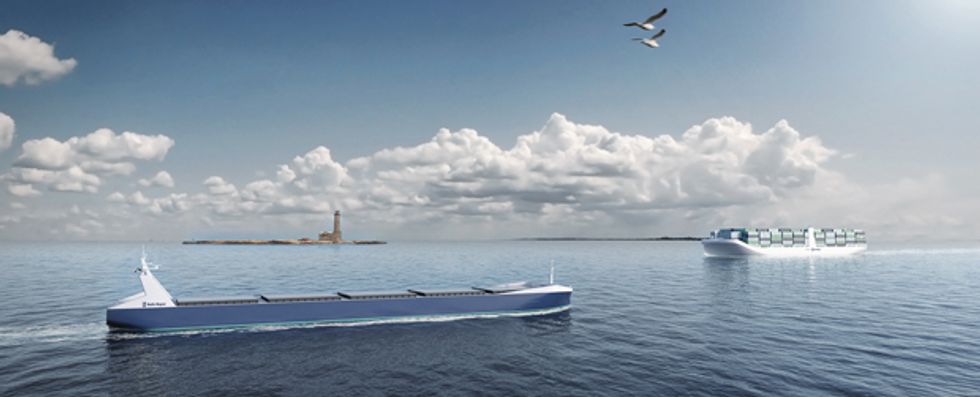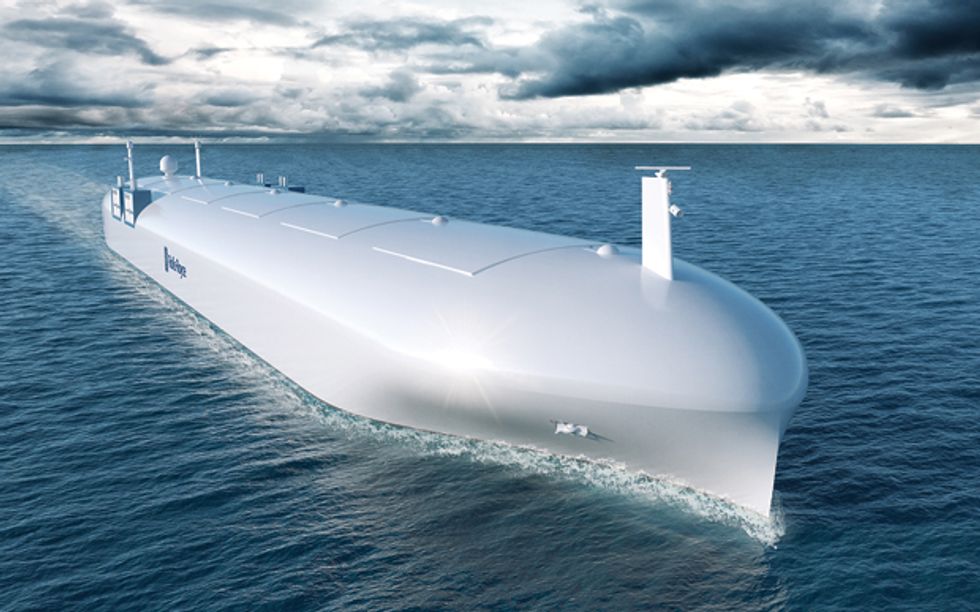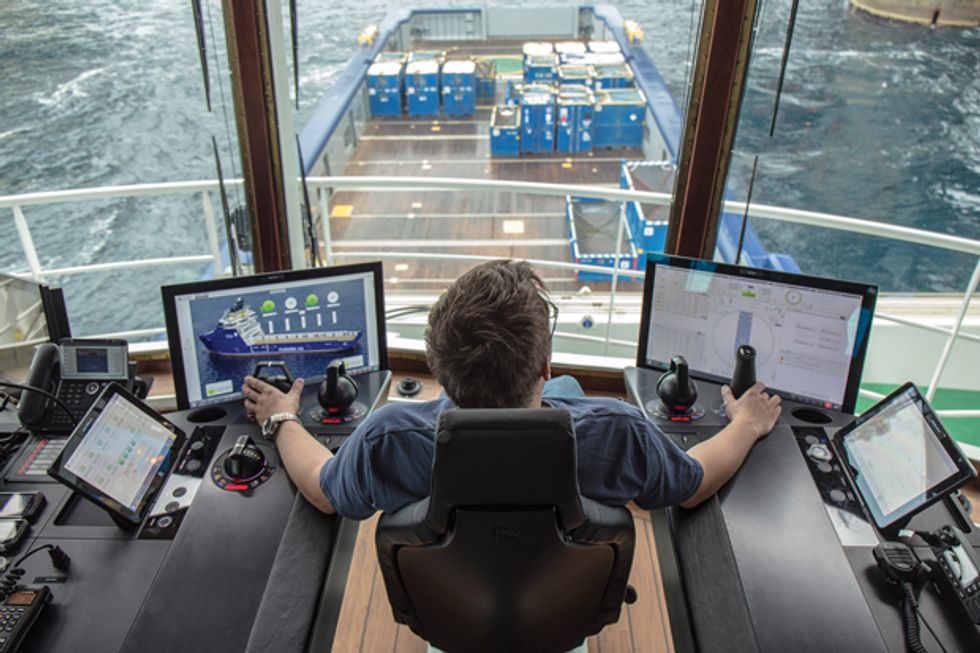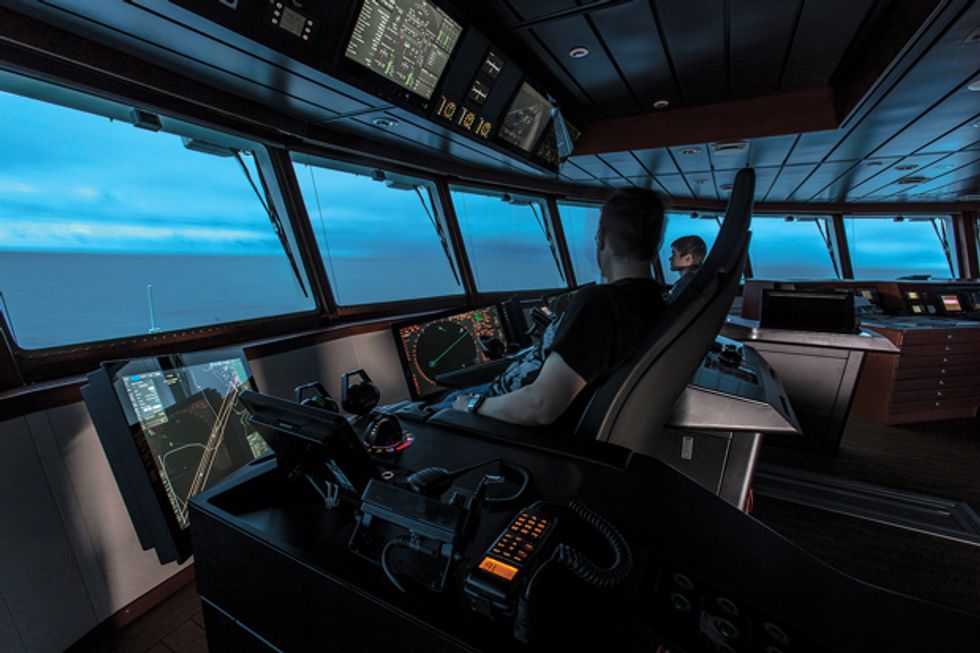Forget Autonomous Cars—Autonomous Ships Are Almost Here
If Rolls-Royce has its way, commercial vessels will soon have no crew on board
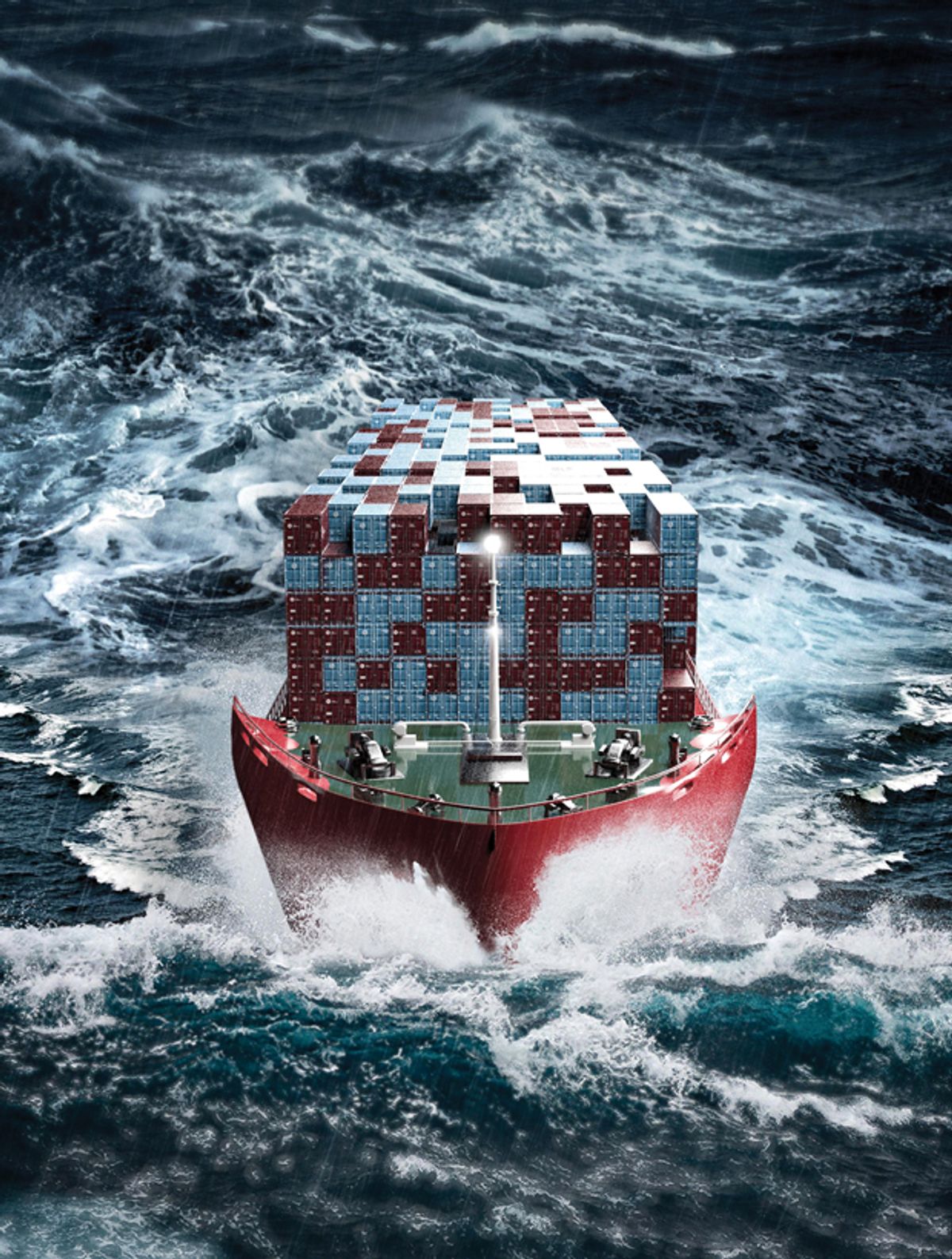
It's midnight on the North Atlantic, where a massive container ship receives the latest weather report. There's a nasty storm brewing ahead. Quietly, the ship changes course and speed, to skirt the worst of it and ensure an on-time arrival at its destination. The ship's owners and the harbormaster at its next port of call are advised of the revised route. And as it nears shore, the giant ship must correct course once again, this time to steer clear of a fishing vessel off its starboard bow.
Just another day for trans-Atlantic shipping, it might seem. In fact, it's not. You see, this ship has no one aboard. It's commanded from an operating center on the other side of the world, where technicians are monitoring and controlling this vessel and others like it through a satellite data link—that is, when the ship isn't just controlling itself.
Although robotic ships of this sort are some ways off in the future, it's not a question of if they will happen but when. My colleagues and I at Rolls-Royce anticipate that the first commercial vessel to navigate entirely by itself could be a harbor tug or a ferry designed to carry cars the short distance across the mouth of a river or a fjord and that it or similar ships will be in commercial operation within the next few years. And we expect fully autonomous oceangoing cargo ships to be routinely plying the world's seas in 10 or 15 years' time.
Remotely controlled ships, piloted by people on shore, and autonomous ships, which can take actions for themselves, are the latest beneficiaries of increasing digital connectivity and intelligence. These developments in electronic sensors, telecommunications, and computing have sparked interest in a range of autonomous vehicles including cars, planes, helicopters, trains, and now ships. Companies and academic researchers around the world are working hard to turn these ideas into reality.
In particular, Rolls-Royce has mounted a joint industry project in Finland called Advanced Autonomous Waterborne Applications (AAWA). The participants hope to create the technology for a remotely controlled or fully autonomous ship that will operate in coastal waters before the end of the decade. And we're not alone.
The European Union's MUNIN (Maritime Unmanned Navigation through Intelligence in Networks) project, led by the Fraunhofer Center for Maritime Logistics and Services, in Hamburg, is assessing the technical, economic, and legal feasibility of operating an uncrewed merchant vessel autonomously during an open-sea voyage. In addition, researchers at DNV GL, an international ship-certification organization, are exploring the feasibility of using uncrewed battery-powered vessels to transport freight along Norway's long coastline. And China's Maritime Safety Administration and Wuhan University of Technology have partnered in their Uncrewed Multifunctional Maritime Ships Research and Development Project. Their goal is to find ways for autonomous ships to be used within China's own commercial and military maritime sectors.
Clearly, there's a lot of work being done on robotic ships. I'd like to give you here an insider's perspective about the nature of these efforts and why they are so exciting.
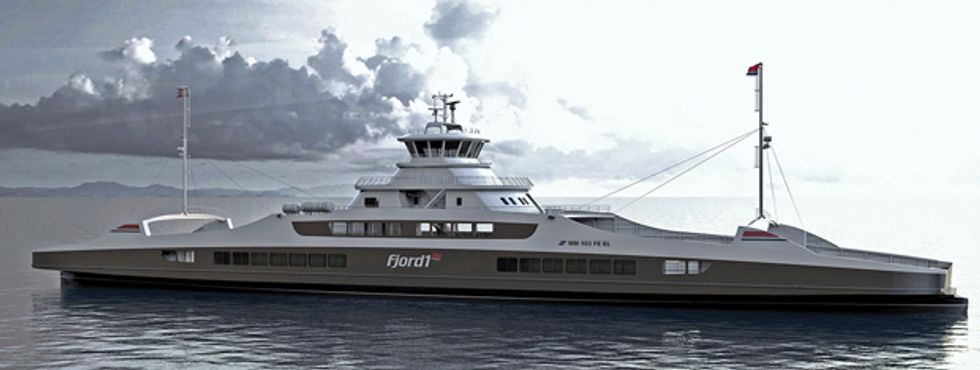
That people should be seriously interested in robotic ships is easy enough to explain: Such ships are expected to be safer, more efficient, and cheaper to run. According to a report published by the Munich-based insurance company Allianz in 2012, between 75 and 96 percent of marine accidents are a result of human error, often a result of fatigue. Remotely controlled and autonomous ships would reduce the risk of such mistakes and along with it the risk of injury and even death to crew members, not to mention the dangers to the ship itself.
The threat posed by piracy to ships and their crews would also be reduced. That's because uncrewed ships could be built so that they'd be very difficult to board on the high seas. Even if pirates got aboard, access to the controls could be made unavailable. Indeed, the computers in command could immobilize the ship or have it steam in a circle, making it relatively easy for naval authorities to reach it. Recapture would also be easier than is usually the case in such situations because there would be no crew held hostage. And without a captured crew to ransom, the target of the piracy is significantly less valuable.
Another advantage of remotely controlled and autonomous ships is that they can be designed with a larger cargo capacity and lower wind resistance. That's because, with no crew to accommodate, certain features of today's ships can be eliminated—for example, the deck house, the crew quarters, and elements of the ventilation, heating, and sewage systems. This will make the ship lighter and sleeker, cutting fuel consumption, reducing operating and construction costs, and facilitating designs with more space for cargo.
Finally, intelligent ships will provide owners and operators with a way to respond to the growing shortage of people who have the requisite maritime skills. With more and more mechanical and electronic systems on board, ships are becoming increasingly complex, needing skilled technicians to keep them working. At the same time, seafaring as a career is growing less attractive, with fewer people from developed nations wanting to spend weeks or months at a time away from home and family. Remote and autonomous operations could facilitate the transfer of jobs requiring high levels of education and skills to ports of call or to operations centers on land, making such careers more interesting to young people entering the industry.
All the technological building blocks are in place to construct and control robotic ships. What could prove to be more challenging, though, are the regulatory changes required to allow such ships to operate. At the moment, global shipping regulations are unclear about whether these ships would be permitted, how they could be insured, and who would be legally liable in the event of an accident.
Along with members of the AAWA project, at least two other groups in Europe are looking at changes to regulations that would clarify these questions. A group called SARUMS (Safety and Regulations for European Unmanned Maritime Systems), led by Sweden with six other participating countries, is one. In the United Kingdom, the Maritime Autonomous Systems Regulatory Working Group has been carrying out similar efforts. The ultimate aim is to ensure that the next substantial iteration of the International Convention on Safety of Life at Sea—the rules that govern international shipping—reflects these technological developments.
The regulators debating these issues will clearly want to know just how safe robotic ships will be. So the challenge for engineers now is to combine relevant technologies to best effect to avoid all possible dangers.
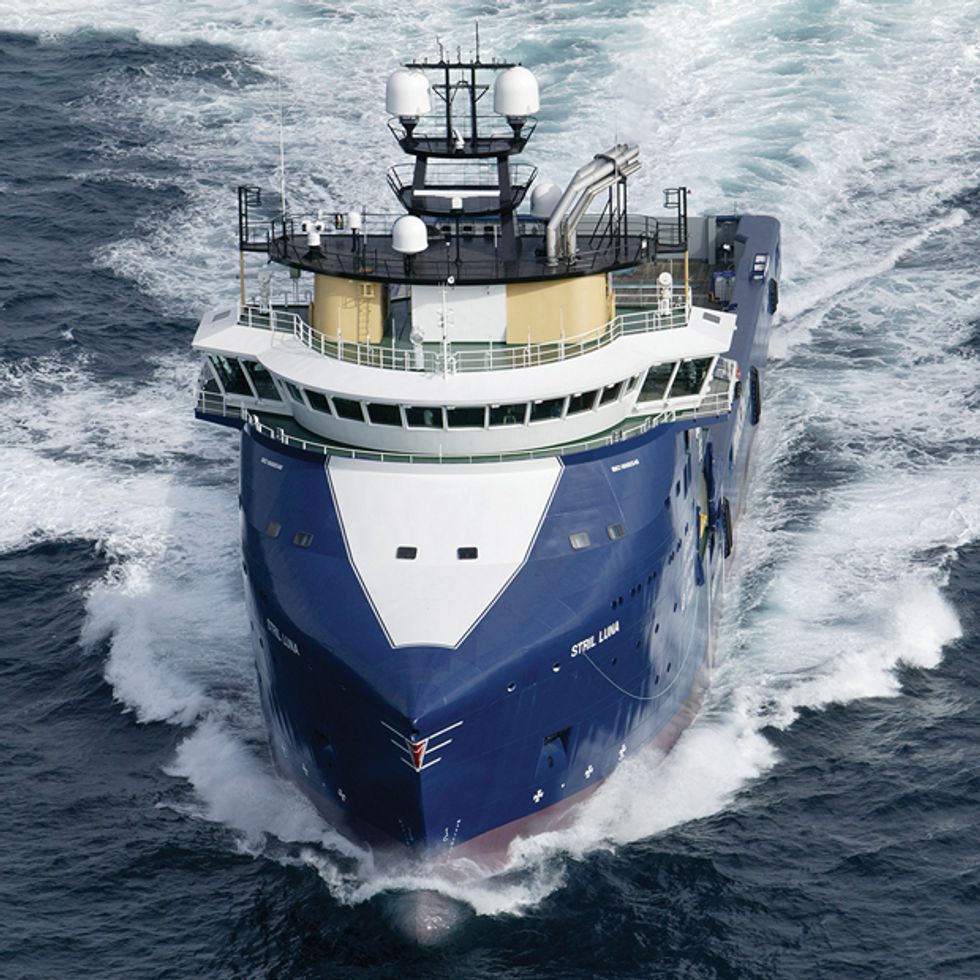
Vital to the development of remotely controlled and autonomous operations will be a ship's ability to sense and communicate what's going on around it so that it can navigate to its destination, avoid collisions along the way, and perform complex maneuvers, such as docking when it finally arrives. We at Rolls-Royce are working on situational-awareness systems that integrate imagery from high-definition visible-light and infrared cameras with lidar and radar measurements, providing a detailed picture of the ship's immediate environment. This information can then be either transmitted back to a remote-operations center—where it would be presented to an experienced skipper—or used by the ship's onboard computers to generate the appropriate next action.
The ship's remote commander or its autonomous-navigation system would also take advantage of many other sources of information: fixes from satellite navigation, weather reports, broadcasts from other ships about their positions and identity. Ships' crews today are already using multiple data sources and electronic aids as part of their daily activities. Systems already exist to plot other vessels, assist with navigation decisions, monitor the ship's main machinery, and ensure that the engines and other key mechanical components are performing properly.
In the future, ever more data will be available from sensors embedded deep in the ship's key systems—its main engines, cranes and other deck machinery, propellers and bow thrusters, electrical generators, fuel-filtration apparatus, and so forth. This information will help determine whether these systems are working correctly and in the most efficient manner possible. When a critical part starts to fail, preventative maintenance can be scheduled at the next port of call or, if need be, by dispatching people to make repairs while the ship is still at sea.
Of course, when the ship involved is autonomous or remotely operated, getting this data to shore in a timely manner is vital. Such ships will thus require constant real-time communications links. While satellite communications have been available to ships on the high seas for many years, service is now getting really good. In particular, AAWA partner Inmarsat launched its third Global Xpress satellite in August 2015, which gave the company the ability to support broadband data links almost anywhere in the world. So Inmarsat can provide future uncrewed ships with high-speed broadband connections from space, just as it is doing for today's vessels.
Protecting those data streams and the ship's systems to which they connect from hackers will, of course, be crucial. You don't want troublemakers to divert ships from their routes, or worse, make them collide with something. While providing it will be no small task, we at Rolls-Royce are confident that such security can be achieved.
Even when ships are able to operate completely on their own, there will have to be somebody on land who is able to take charge if conditions demand it. Different types of ships, or ships at different stages of their voyages, will likely require very different levels of oversight and control. A cargo carrier far out at sea will normally need little human supervision, with a single captain overseeing many ships at the same time. A vessel operating in a congested shipping lane, close to shore, or while entering or leaving port, will require much more diligence and the full attention of an individual captain.
As a consequence, an important technological component in all this is the development of remotely controlled systems and control centers. Building on the experience gained from work in aviation, nuclear energy, and space exploration, and from constructing simulators used for training mariners, my Rolls-Royce colleagues and I have been studying how to design such centers. Their configuration must take into account not just ergonomics but also ease of use and how to convey a realistic portrait of what is happening around the ship.
To construct such remote-operations centers, Rolls-Royce will also take advantage of what its engineers have learned while designing and building its Unified Bridge, which is a complete redesign of the traditional ship's bridge, one that provides a more comfortable, clutter-free, and ultimately safer working environment for mariners. The initial example of Rolls-Royce's Unified Bridge sailed for the first time in August 2014 on the Stril Luna, a vessel owned by Simon Møkster Shipping and used to supply oil-drilling platforms. Since then, the Unified Bridge system has been incorporated into tugs, megayachts, polar research vessels, even a new type of cruise ship.
It's unlikely there will be a single scheme for building and operating robot ships. Some of these vessels could operate without any crew at all, and those will look radically different from current designs. Others will rely on a blend of autonomous and remote control, sailing autonomously in open water but falling back on remote control where more advanced maneuvers are required. Some, such as cruise ships, are always likely to need crew if only for customer service, safety, and reassurance. I expect that the crewed ships of the future will feature many of the same technologies as the uncrewed ones. That is, they'll provide the people on board with improved situational awareness, increasing safety.I can't point to examples in the water, but Rolls-Royce is working now on the specifications and on preliminary designs for the first generation of advanced intelligent ships. My colleagues and I are bringing together researchers at universities, ship designers, equipment manufacturers, and classification societies to explore the economic, social, legal, regulatory, and technological factors that need to be addressed.
The first intelligent ship to go into commercial operation will use mostly technology that already exists. That vessel will likely ply the coastal waters of a single “flag state," a seafarer's term for a country that can provide the legal basis for a ship's operation. The ship could be a ferry, a tug, or other coastal vessel traveling within a very confined area. It could still have a crew on board, although they will be carrying out duties other than navigating the vessel.
Indeed, the testing of such ships is not far off. The Norwegian Maritime Authority and the Norwegian Coastal Administration have signed an agreement that allows for relevant sea trials to take place in the Trondheim Fjord, the first place in the world to be designated for the testing of autonomous ships. Meanwhile in Finland, an association called Finnish Marine Industries, the Ministry of Transport and Communications, and Tekes (the Finnish Funding Agency for Innovation) have joined Rolls-Royce and other companies to develop and explore autonomous marine transport in the Baltic Sea.
Expect such a ship by 2020. By 2025, some forward-thinking shipping companies will be operating remotely controlled, completely uncrewed vessels on the high seas. Five years beyond that, uncrewed oceangoing vessels will be commonplace.
These ships will represent some of the most fundamental changes seen by the shipping industry in a long time. But other changes are probably in store as well. The shift from having a crew on board to having land-based technicians manage ships remotely will no doubt revolutionize the operation of the global supply chain, creating new services, more-efficient schemes for leasing and pooling vessels, the emergence of online marketplaces for cargo delivery by sea, and other clever innovations for the digitally connected age. These changes will probably be disruptive, as new players enter a rather staid market, the same way as Uber, Spotify, and Airbnb have done in other realms. So it won't just be the robotic ships that are making waves.
This article appears in the February 2017 print issue as “Autonomous Ships on the High Seas."
